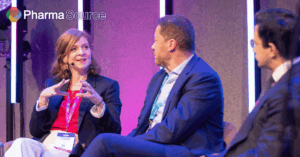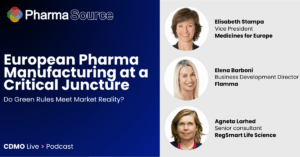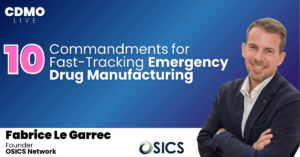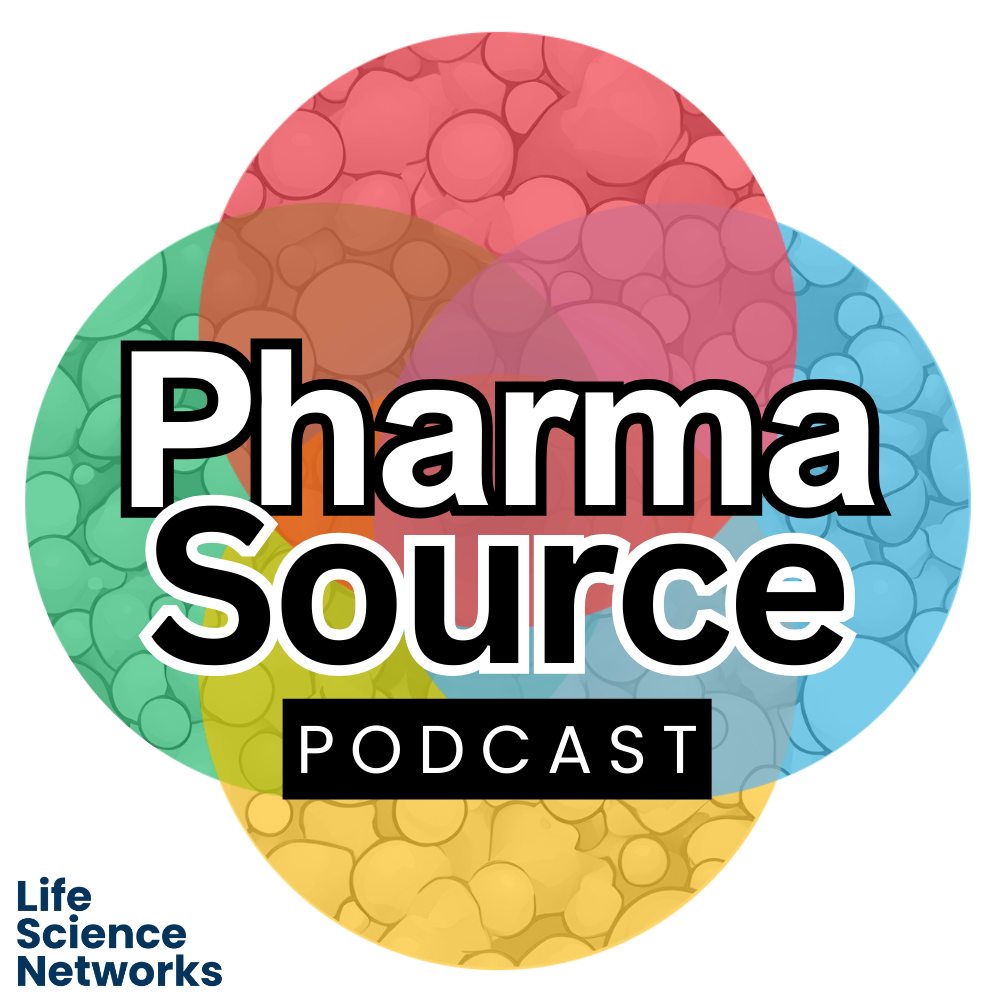“There’s optimism… but the challenges aren’t day to day – it can be minute to minute,” warns Gil Roth, President of the Pharma and Biopharma Outsourcing Association (PBOA), describing a pharmaceutical manufacturing sector facing unprecedented change in 2025.
Gil Roth brings deep expertise in pharmaceutical policy and manufacturing legislation, having launched PBOA in 2014 as an essential bridge between contract manufacturers and government stakeholders.
In the latest PharmaSource podcast episode, Gil shares detailed insights into how the new Trump administration’s trade policies and leadership changes will likely create both challenges and opportunities for US pharmaceutical manufacturing.
Trade Wars Create Supply Chain Uncertainty
The new administration’s implementation of Chinese import tariffs may fundamentally reshape pharmaceutical supply chains, with potentially serious implications for drug availability and pricing.
The Association for Accessible Medicines recently came out against the 10% tariff over Chinese products, with CEO John Murphy stating that generic manufacturers “simply can’t absorb new costs” from the new tariffs as and will be “forced to exit markets where they are underwater”.
Gil explains that even the APIs that are exported to India for final dosage form manufacturing, could still have the China tariff being added to them, “which would really damage the economics of commoditised generic products in the US.”
The impact could be severe: “This could potentially lead to drug shortages, given the lack of flexibility that generic drug owners have when it comes to the contracts they have with group purchasing organizations in the US.”
FDA at a Crossroads
With significant leadership changes at the FDA, including a new commissioner awaiting Senate confirmation, Gil says that maintaining the agency’s core functions is critical.
“The agency’s work is vital, and the idea that it can all be disrupted or somehow done much cheaper does not necessarily hold up,” Gil states firmly. He highlights that user fees, which “account for more than half of FDA’s total budget,” are built around specific commitments to industry.
The implications of potential staffing changes could be far-reaching: “Freezing the government’s ability to hire would mess with FDA’s ability to fulfill its user fee requirements. These are negotiated between FDA and industry, transmitted to Congress, and become part of statute and law.”
Investment Climate Shows Promise
Despite challenges, Gil sees positive signs in the investment landscape, particularly with the current administration’s approach to M&A activity.
“As funding has started to come back in the past year or so, it’s largely been funnelled towards late stage R&D projects,” he notes. However, he emphasises the importance of maintaining early-stage investment: “If you’re not taking care of those earlier stages of R&D, you’re not going to have those later stages down the line.”
The CDMO sector’s private equity backing adds another dynamic: “The CDMO sector is largely private equity funded, which means there’s always an impetus to turn the company, to either sell or flip or somehow move the company in three to five years.”
BIOSECURE Impact Lingers
While the BIOSECURE legislation didn’t pass, its impact continues to reshape the CDMO landscape. Gil describes it as “a wake-up call” that triggered significant market restructuring:
“It was a significant operation for both the client side and CDMOs to assess what the market would look like if the five companies that were named in the initial iteration of BIOSECURE were prohibited from working with companies that received US government contracts.”
The legislation’s future remains uncertain, with ongoing debates about implementation: “One of the reasons it was pulled or did not advance on the Senate side at the end of last year really centered around the naming of five companies… The idea was that if a company is named in statute, it has to be named in another statute to be removed. Concerns about due process for those companies prevailed.”
US-EU Sustainability Divide Widens
Looking ahead, Gil identifies growing tensions between US and European approaches to sustainability.
“Europe is much stronger on this. They’re not seeming to be relenting on ESG-related issues… The world is not just the US and Europe. There are going to be other regions at play here deciding what really matters to them.”
Gil will be speaking at CDMO Live in Rotterdam this May, where he hopes to provide greater clarity on these evolving situations: “Over three months, we’ll have more clarity on where this administration is, how FDA is functioning and what Congress’s priorities are. I hope to have more of an answer about the potentials for BIOSECURE, whether it’s dead and gone, or could exist in another iteration.”
To find out more about CDMO Live download the full agenda here












 Stay ahead of trends and best practices
Stay ahead of trends and best practices
